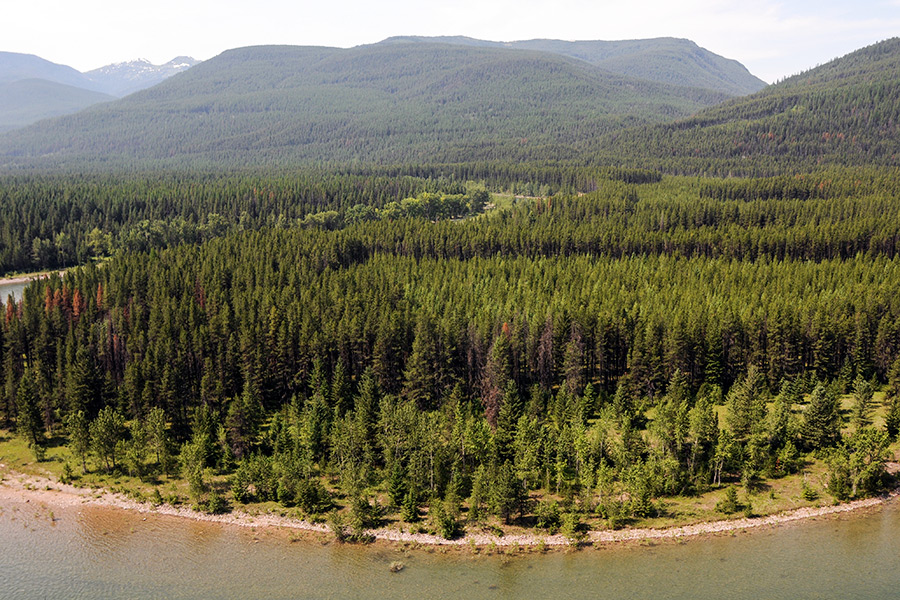Flathead National Forest officials are seeking public comment on a proposed timber project that would include 757 acres of commercial harvest near the Spotted Bear River’s confluence with the South Fork Flathead River, about 40 miles southeast of Hungry Horse.
The proposed “Spotted Bear Mountain Project” encompasses 3,776 acres within the Spotted Bear Ranger District on the Flathead National Forest, 42% of which would occur on acreage within the wildland-urban interface (WUI) established by the Flathead County Community Wildfire Protection Plan. A section of the South Fork Flathead River that’s been designated as a Wild and Scenic River corridor runs through the project area, although no treatment would occur along the river corridor, according to the proposal.
The northwest corner of the project area lies near the historic Spotted Bear Ranger Station at the confluence of the Spotted Bear and South Fork Flathead rivers. From that point, the project area extends to the southeast for approximately five miles, bordering the eastern bank of the South Fork.
None of the proposed treatment area has experienced wildfire since before 1885, but wildfires such as the Trail Creek Fire of 2015 have burned nearby and wildfire mitigation is a centerpiece of the project. According to Spotted Bear District Ranger Scott Snelson, the intent of the project is to “address wildland-urban interface fuel loading, diversify plant and tree communities, and provide a mix of forest products for local economies.”
In addition to the commercial timber harvest, the proposal includes 293 acres of noncommercial treatments, such as thinning and prescribed burning. Approximately 2.7 miles of roads would be constructed and added to the Flathead National Forest road system, while 0.6 miles of temporary roads would be constructed and then rehabilitated after log hauling is complete, the proposal states. Public motorized access would not change.
“We are eager to hear from the public as we continue to develop this project,” according to Snelson, who encouraged public comment. “Your input will help us refine our proposed action.”
In an effort to improve the forest’s long-term resistance to insects, disease and fire, forest managers hope to diversify tree species and sizes. For the Spotted Bear project, the proposed work would decrease the dominance of Douglas fir and increase the presence of aspen and fire-tolerant species such as ponderosa pine and western larch, according to Snelson. Throughout the project area, Douglas fir trees are dying from root disease and beetle kill, he said.
“This project will help our large trees, particularly our large ponderosa pines, thrive into the future,” Snelson said.
Another goal of the of the project is to reduce existing wildland fuels. By reducing forest fuels, expected fire behavior is reduced.
“The proposed treatments are especially important in the northern project area which is close to guest ranches and the Spotted Bear Ranger District buildings,” according to Snelson.
The public can find maps, other project information, and instructions for how to provide comment on the project website. For questions, please contact project leader Gary Blazejewski at [email protected] or (406) 387-3827.
